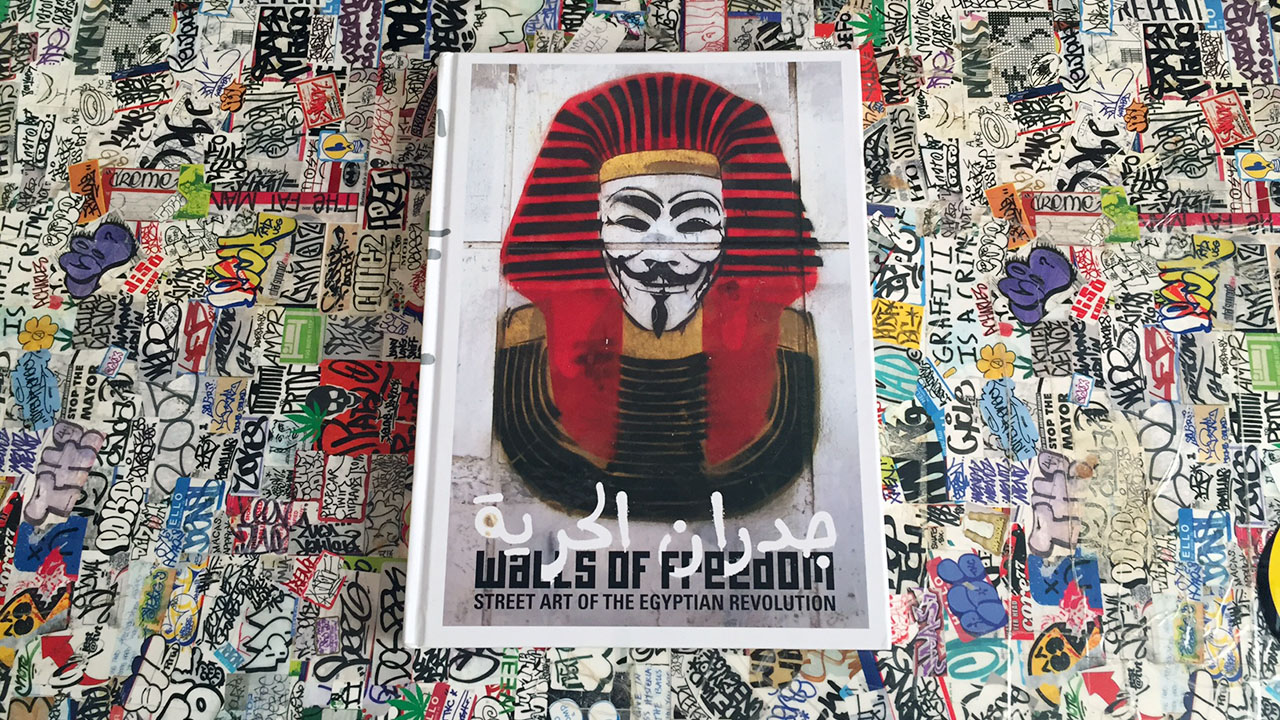Egyptian officials, who have in recent years arrested journalists, artists and even a popular satirist, have now confiscated a book about street art and graffiti out of fear that it is “instigating revolt.”
The book, Walls of Freedom, by design professor Basma Hamdy and street artist and activist Don Stone, documents the 2011 Egyptian revolution and the three years that followed as Egypt cycled through dictators and militant leaders. Street art became a sign of dissidence, punishable by jail or worse, but some continued to risk their lives to speak up. The book’s striking photos of deeply political art are supported by thought-provoking essays that add rich historical context and tell a story of upheaval, chaos and passion. The collaborative work was crowd-founded and brought together 100 photographers (including ANIMAL’s Aymann Ismail), 50 artists and 20 writers to tell the story of Egypt’s revolution.
The telling of this story, apparently, is a threat to President Abdel Fattah el-Sisi. The ministry’s undersecretary Ahmed al-Sayyad told an Egyptian newspaper that the book gives “advice on confronting police and army forces.” Alexandria customs officials seized 400 copies of the book just as they arrived from Germany.
Ganzeer, one of the notable artists whose work is featured in the book, was shocked. “They can’t really think 400 copies of a pricey book can really pose a threat to national security. It’s fucked up,” he told ANIMAL. “I just hope nobody gets arrested for it.”
Novelist Ahdaf Soueif, who wrote the book’s foreward, republished the introduction on Facebook in response to the book’s confiscation:
Our street art exemplified the difference between the revolution and the system: the system murdered, the revolution immortalised. The system used teargas and live ammunition, the revolution used stones and drums and fireworks. The system built brutal, obstructive walls partitioning the streets of downtown, the revolution transformed these walls into rainbows, tropical beaches, and playful trompe l’oeil vistas of the streets themselves.
In the streets of the revolution we talked a lot about how the people were ahead of the political classes, ahead of academia and the theoriticians. The people were leading the way. But we needed the political scientists, the academics to catch up; the revolution needed them to describe it, to theorize it, to map it.
This book is an attempt to do that; part witness, part theory, part commemoration, it is an act within our revolution – our continuing revolution.
Read it in full here.
(Photo: Walls of Freedom)


